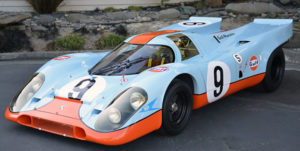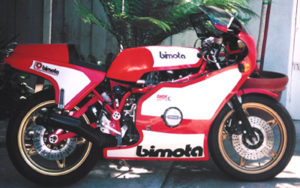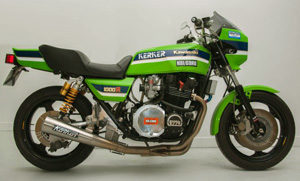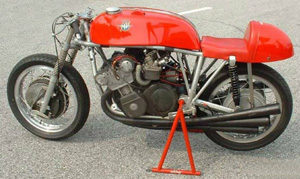We Love Speed, Fast Cars and Motorcycles And Bring You “The Legends of Motor Racing”.
There are racing vehicles that are part of everyone’s dream – “I would love to drive this thing just one time”. However, most of the time they are out of reach, or so expensive, they hardly get raced anymore. Many times it is both.
On the list you find the Porsche 917, Porsche 935, the BMW 3.0 CSL, the rare Formula 1 car, and of course a Ferrari or two.
On the list for motorcycles you find the Kawasaki KR750, the Yamaha TZ750, and the 3 and 4-cylinder MV Agusta.
We hope you can live your dream and some day drive one of these fast master pieces.
There are racing cars and then there are Legends. To become a Legend does not always mean lots of race wins, or being the fastest car on the track, no, sometimes the introduction of a revolutionary technology or design can be enough.
Here are a few cars we think are Lengends:
Porsche 911
From its inception the Porsche 911 has been entered in, and won nearly every kind of race imaginable. 911s in various guises have won the Monte Carlo rally, the Paris-Dakar, the Targa Florio, the 24 Hours of Daytona, the 12 Hours of Sebring, the 24 Hours of Le Mans, and numerous rally and GT championships.
It’s hard to imagine any one car that has won a more diverse number of prestigious races than the mighty 911 and its evolutions like the 911RS, 911RSR, 911 Carrera, 934, 935, and 959. Truly a Legend, on the track and on the street
Porsche 917
Drivers to this day say, “the 917 is the scariest thing I’ve ever driven. I feared for my life ever second.” With massive horsepower and questionable aerodynamics, the highest official speed ever clocked for a 917 at Le Mans is 362 km/h or 224.4 mph – truly terrifying. 
The Porsche 917 was produced from 1969 to 1973 and gave Porsche its first overall wins at the 24 Hours of Le Mans in 1970 and 1971. Powered by the Type 912 boxer engine, the 917/30 Can Am variant was capable of a 0-62 mph (100 km/h) time of 2.3 seconds, 0–124 mph (200 km/h) in 5.3 seconds.
There are at least eleven variants of the 917, such as the short tail and long tail, or Kurzheck and Langheck versions, as well as an open-top Spyder. There are 12-cylinder and even 16-cylinder versions of the engine, with and without turbo, and in 1969, the 917 had a cost of about ten Porsche 911s.
The car had remarkable technology. It was Porsche’s first 12-cylinder engine and used many components made of titanium, magnesium and exotic alloys. Other methods of weight reduction were rather simple, such as making the gear shift knob out of balsa wood, some methods were not simple, such as using the tubular frame itself as oil piping to the front oil cooler.
It was not uncommon to scored a 1-2-3-4-5 win with 5 Porsche 917 cars entered to race. The 917/30 was the most powerful road racing car racer ever built. The 5.374-litre 12 cylinder twin-turbocharged engine could produce 1,580 hp, weighing only 1,800 lb (820 kg).
The 917 is one of the most iconic sports racing cars of all time. From 1996 to 1973, over 50 chassis were built in total turning Porsche into the new leader of sports car racing, and creating a Legend.
Porsche 956/962
The legendary 956/962 combination cemented Porsche’s position at the fore of sports car racing during a 12-year stint between 1982–1994, sporting the infamous Rothmans livery. A twin-turbo, air-cooled 2.6-litre flat-six, slippery body and F1-derived ground effect aerodynamics were instrumental in making the Porsche 956/962 a true sports car Legend. In 1994, 12 years after it made its debut, a modified-962 won Le Mans outright against the very best Toyota, Nissan or Porsche themselves could come up with in the post-Group C era.
Porsche 935
Derived from the Porsche 911 RSR, the iconic Porsche 935 sported a turbocharged monster-horsepower engine and slippery aerodynamic bodywork which made the 935 a terrifyingly fast race car that dominated production-based racing for a decade or more. Its 750-horsepower engine pushed the 935 to 226 mph on the Mulsanne Straight at Le Mans. Between 1976 and 1984 the 935 won over 150 races worldwide, making the Porsche 935 a true Legend.
Porsche 959
In the ultimate demonstration of the flexibility of the 911’s rear-engine, air-cooled design, Porsche decided to transform its ultimate sports car of the time, the Porsche 959, into the ultimate off-road racer and prove it in the hallowed Paris-Dakar Rally in 1986 and finished first and second and a Legend was born.
Ford GT40
The Ford GT40, who beat out Ferrari at Le Mans, is etched in the history books. The car took four back-to-back wins at the famed race between 1966–1969. How did it come to this? In 1963, Henry Ford II negotiations with Enzo Ferrari to buy the Italian marque, came to an end when Ferrari pulled the plug on the deal. Enraged, Ford ordered his racing division to build a car capable of destroying Ferrari at Le Mans. The rest is history.
Ferrari 250 GTO
Who can argue that the Ferrari 250 GTO is one of the greatest race car Legend of all times. And with only 39 produced, it is also super rare and expensive. The Ferrari 250 GTO went on to win the International Championship for GT Manufacturers three years in a row, and was the last to do so at the top-level of sports car racing with a front-mounted engine. Beautiful, successful and exclusive, the 1962 – 1964 250 GTO has earned the reputation as a Legend.
Mini Cooper
The creator of the original Austin Mini never intended the car to be anything other than a car for the people, however by the end of the ‘60s the car had evolved into a world-beating race car. In the hands of Paddy Hopkirk it won the Monte Carlo Rally in 1964, 1965 and 1967.
Audi Quattro Group B
No car in the history of motorsport deserves the title of Legend quite like the Audi Quattro. In a nutshell, it introduced four-wheel drive to the World Rally Championship, a simple yet essential technology that has stayed ever since. The Quattro won the WRC title in 1983 and 1984.
With a 2.1-liter turbocharged five-cylinder engine making 600 hp, the S1 E2 was a Group B monster obliterated rally courses.
Lancia Delta Integrale
The Lancia Delta Integrale established the marque as the finest rally car manufacturer in the world. The Integrale won six consecutive titles from its debut season in 1987 up until 1992, beating the likes of Toyota, Ford, and Mitsubishi in the process. Besides sporting success, the Delta Integrale is also remembered for one of the most iconic liveries in motorsport, thanks to Martini. Even today the Delta Integrale is considered by many as the ultimate hot-hatch.
Hudson Hornet
The Hudson Hornet was a cornerstone of NASCAR’s rise to prominence in the ‘50s, recording a scarcely believable 83 per cent win percentage in 1952, at a time when stock car racing really was contested by stock cars. Between 1952–1954, the Hornet took 67 wins from 108 NASCAR Grand National races.
Nissan Skyline GT-R (R32)
Nicknamed ‘Godzilla’, the Nissan Skyline GT-R R32 is arguably the most devastating Touring car ever and a true Legend. Unleashed in the early ‘90s, the R32 dominated championship racing at home in Japan and crushed the All Japan Touring Car Championship to a mere one-make series, winning 29 races from 29 starts.
BMW E30 M3
In the ‘90s, manufacturers around the world were producing cars not purpose-built for the road, but instead geared for the track. The BMW E30 M3 was one such car. Sporting a brutal 300bhp S14 2.3-litre engine the M3 conquer the Italian, German, British, and French Touring car championships, becoming a Legend.
Chevrolet Corvette C5-R
Having lost out to the Dodge Viper in 2000, the Corvette C5-R returned for its second year of competition in 2001 targeting world domination – which it achieved. The cars four years of competition saw it rack up 25 class victories and three wins at Le Mans, beating even the Prodrive Ferrari squad in the process.
Mazda 787B
An interesting car, full of technological advances, and the only Japanese car, and the only rotary-powered car, to ever win the 24 Hours of Le Mans. To this day, much larger Japanese manufacturers like Toyota, Nissan and Honda have never been able to accomplish that feat. The 1991 Mazda 787B is a true racing Legend.
Bugatti Type 35
Regarded as the first modern racing car, as all cars raced before it were modified road cars. The 1932 Type 35 was ground-up purpose built.
An exact figure is impossible to determine, but the Type 35 won over 1,000 races. Everything from amateur hill climbs to professional Grands Prix, this Bugatti won it all, making it a Legend of motor racing.
Maserati 250F
The car that took Juan Manuel Fangio to the greatest win in the history of motor racing. From 1954 to 1960 only 26 cars were made, competing in 46 Formula One championship races with 277 entries and eight wins. Cutting edge technology helped making it a true racing Legend.
Audi R8 (LMP)
The Audi R8 is one of the most successful race cars, with a staggering five wins at the Le Mans 24 Hours between 2000–2006. The R8 is the yardstick in LMP1 competition, a car so quick it had to be constantly pegged back by the authorities, who regularly reduced the power output of the 3.6-litre V8. Once called, “a terrifyingly quick and obnoxiously reliable race car”.
Audi R10
The first turbo-diesel race car, the R10 won Le Mans in 2006, 07 and 08, and made it an instant Legend.
Ferrari F2004
The 2004 Ferrari F2004 was one of the most successful Formula One racing car in history. Heavily based on the previous season’s F2003, the F2004 continued the run of success the team had enjoyed since 1999, winning the team’s 6th straight Constructors’ Championship and 5th straight Drivers’ Championship for Michael Schumacher. It is one of the most dominant cars in the history of Formula One, making it a true Legend.
Auto Union
In the mid-1930s, Auto Union produced the legendary Type A, B, C and D race cars. Uncommon for the time, these race cars featured a mid-engine design. Type A, B and C cars came with a 16-cylinder engine, while the Type D made due with a 12-cylinder unit.
The Auto Union Type C Streamliner had an uber-aerodynamic shape designed to get the most out of the 560 hp engine. During testing on the Autobahn, the Streamliner achieved 400 km/h (248 mph) in 1937, making it a true racing Legend.
Chaparral 2J
Chaparral, very competitive in 1970 Can-Am racing, thought up an ingenious way to get optimal downforce regardless of the speed of the car, and installed a giant vacuum suction device on the Chaparral 2J.
Two large fans were mounted on the rear of the car powered by a snowmobile engine that would suck up air from underneath the car. Using a skirt that was kept one inch off the ground at all times, the 2J could achieve ridiculous amounts of downforce consistently around the track.
Lancia Stratos HF
In the 1970s, Lancia partnered up with Bertone to build a new rally car. To get more traction to the rear wheels, Lancia went with a mid-engine setup and installed the 2.4-liter V6 derived from the Ferrari Dino.
Looking more like a supercar than a rally car, the Stratos HF proved to be very successful, winning the 1974, 1975 and 1976 WRC championship. .
McLaren MP4/4
To say the McLaren dominated the 1988 season would be a gross understatement. Of the 16 races run, McLaren won 15 of them. The Marlboro liveried M4/4 used the Honda 1.5-liter turbocharged engine, becoming utterly dominant and an immediate Legend.
BMW M1
BMW came in second at the 1979 Le Mans entry, the M1 Group 4 racer. Not only is the mid-engined M1 one of the greatest cars BMW has ever built, it was hand painted by pop art icon Andy Warhol. The car is one of the few cars in the world that’s welcome on both the race track and in art galleries, and a Legend.
1964 Ferrari 250 LM
Winning every race between 1960-1965, Ferraris entries were as breathtaking as they were formidable. The 1964 Ferrari 250 LM (short for Le Mans) is arguably one of the most beautiful Ferraris ever made, with one also taking the checkered flag in 1965. Only 34 LMs were built, making them among the rarest production Ferraris in history.
Jaguar D-Type
If Le Mans in the early ’60s belonged to Ferrari, than the ’50s belonged to the beautiful Jaguar D-Type. Between 1951 and 1957, Jaguar took the checkered flag five times, a feat we hadn’t seen since Bentley dominated in the 1920s.
While the D-Type’s legacy is mainly on the track, Jaguar built 16 road-going versions and sold them as the XKSS, creating a Legend on and off the track.
Bentley Speed Six
In the 1920s, few cars combined luxury with performance quite like Bentley. The British company dominated at Le Mans, raking up five victories between 1924 and 1930. Introduced in 1928 as a high performance version of its 6.5 Liter car, the Speed Six was one of the most powerful cars in the world.
McLaren M23
The 1973 McLaren M23 cars were entered in 85 races, winning 16 of them and taking one constructors’ title and two drivers’ titles. The M23 raced from 1973 until 1977 and was powered by a 3.0-liter Ford V8.
Lotus 72
The Ford V8-powered Lotus 72 was raced between 1970 and 1976, winning an incredible 20 races, three constructors’ championships and two drivers’ titles and was replaced by the Lotus 77 in 1977.
BMW 3.0 CSL
The lightweight BMW 3.0 CSL had aluminum doors, hood and truck lid, and plexiglass side windows. The engine had a displacement of 3,153 cc and the car was equipped with an aerodynamic package, including a large air dam, short fins running along the front fenders, a spoiler above and behind the trailing edge of the roof, and a tall rear wing, giving it the nickname “Batmobile”.
In 1973, a 3.0 CSL won the European Touring Car Championship and the class victory at Le Mans. BMW 3.0 CSLs would win the European Touring Car Championship again in every year from 1975 to 1979. The 3.0 CSL was also raced in the IMSA GT Championship in 1975, winning multiple races during the season.
Here are a few motorcycles we think are Lengends:
Kawasaki KZ1000S1 and the Kawasaki KZ1000R Eddie Lawson Replica
A green, mean machine, the Kawasaki KZ1000R Eddie Lawson Replica, or ELR, is a super collectible classic today. It is a limited run, special edition Superbike, named after Eddie Lawson.
1960 Triumph T120 Bonneville
Named after the Bonneville Salt Flats, it tells you everything you need to know. Bone stock it could go 110-mph and.
1949 Harley-Davidson FL Hydra-Glide
Harley-Davidson got the styling right and created a motorcycle with a timeless look sporting a 1200cc Panhead engine.
1948 Vincent Black Shadow
Powered by a black-enameled 1000cc V-twin engine the bike can go 125 mph and was the baddest motorcycle in 1948, and remains one of the most desirable bikes today.
1979 Yamaha RD400F
Light and fast, and smoking, the two-stroke RD400 was regularly humiliating bikes with more than double the displacement on racetracks and backroads across America. It evolved from the legendary TZ350.
1983 Honda VF750F V45 Interceptor
A racing bike for the street, it is a direct descendant of the RC30 racee. Still easy to find, so buy one before they are gone.
1985 Suzuki GSX-R750
The Suzuki GSX-R750 was the first superbike of the modern era “a racebike-with-lights”. Aerodynamic bodywork, aluminum frame, 18-inch mag wheels, mono-shock, and a oil-cooled 106-horsepower inline-four that delivered racetrack acceleration.
1994 Ducati 916
Fast and more beautiful than most motorcycles, not so old yet and still easy to find, the Ducati 916 is a bike that must make this list. The 916 dominated World Superbike racing for years.
Harley-Davidson XR750
Essentially a street-legal AMA track bike. How cool is the XR750? Evel Knievel made it his bike of choice.
Kawasaki 750H2 and 500H1 Triples
The Kawasaki Triples, or “the Widowmaker” as the bikes were called, had had incredible power-to-weight ratio. Bone-stock bikes did sub-13 second quarter-mile runs, thanks to a torquey, free-revving, smoking and rattling 3-cylinder engine, but only if you could keep the front wheel on the ground.
Moto Guzzi LeMans
The Guzzi LeMans is a factory café racer with Italian style.
Laverda Jota
The 1000cc Laverda Jota is a 4-stroke triple that cruised all day and had enough power and good enough suspension to keep up on mountain roads.
Norton Commando 850
The Norton Commando was a light and powerful bike. You could feel the pistons slamming back and forth in the 850cc twin.
Ducati 900SS
The ’70s Ducati 900SS with it’s Desmodromic V-twin engine is one of the best looking bikes ever made. Need more reasons to agree that the 900SS is a “superbike”? It won the Isle of Man TT. Enough said.
1974 Ducati 750 SS
Ducati produced just 400 of the green-framed Desmo 750 SS – they are some of the most sought-after bikes. The Desmodromic valvetrain engine with massive 40mm Dellorto Carbs was the start of a winning streak for Ducati, that has lasted until even today.
1940 Indian Chief
The ‘40 Indian Chief was a worthy competitor to Milwaukee’s finest.
Suzuki RG500
The Suzuki RG500 “Gamma” featured a two-stroke, twin-crank, square-four powerplant that was smoking and crackling, and had an output of 94 hp.
1972 MV Agusta 750S
A classic right from the time it was first introduced. The MV Agusta 750S had a 4-cylinder motor and frame with Grand Prix heritage. And stunning good looks.
MV Agusta 500cc Grand Prix Racers
They don’t come much rarer than this bike. Art on wheels! The 3 and 4 cylinder MV Agusta racing bikes won races again and again and again and again…, you get the point.
1974 Yamaha TZ750
The Yamaha TZ 750 “The Beast”, was the most powerful and fastest racebike of the time, and you could purchase it at your local Yamaha dealer. Only 567 were made – we have no idea how many survive. Sporting a liquid-cooled, four-cylinder, 2-stroke engine, the bike was fast, with the 1979 model TZ 750 F making over 120hp.
1975 Kawasaki KR750
The Kawasaki KR750, or H2R, at one point serious competition to the Yamahe TZ750, is another super rare motorcycle, now almost impossible to find. It featured a liquid-cooled, three-cylinder, two-stroke engine.
1917 Henderson 4
The Henderson Four was the first production motorcycle capable of 100 mph.
1975 Bimota HB1
With only 10 made, the Bimota HB 1 is rare. The bike was derived from a frame kit produced to be paired with a Honda CB750 engine. The Bimota HB1s are definitely one of the most valuable bikes produced in the 1970s with a Japanese motor.
1978 Bimota KB1
The increasingly rare Bimota KB1, sporting a 900cc Kawasaki Z1 engine, is one o f the best looking bike on the street – if you ever had the luck to see one. It was produced from 1977 to 1982, and only 827 were made. Like most Bimotas of this period, the KB1 used a tubular steel frame and was one of the first bikes to feature an adjustable steering head angle. With the weight saving of almost 100 lbs, the KB1 is a lot quicker than the standard Kawasaki, and will reach 140mph.
f the best looking bike on the street – if you ever had the luck to see one. It was produced from 1977 to 1982, and only 827 were made. Like most Bimotas of this period, the KB1 used a tubular steel frame and was one of the first bikes to feature an adjustable steering head angle. With the weight saving of almost 100 lbs, the KB1 is a lot quicker than the standard Kawasaki, and will reach 140mph.


